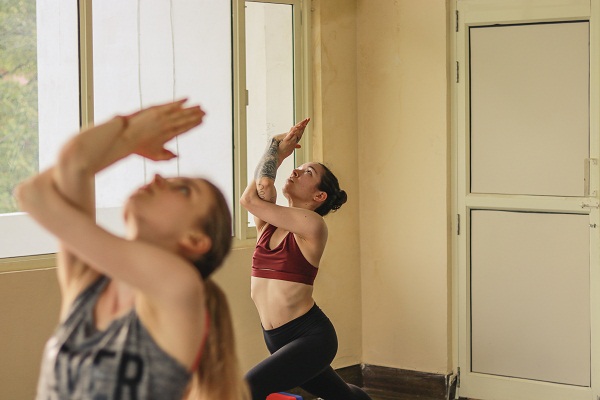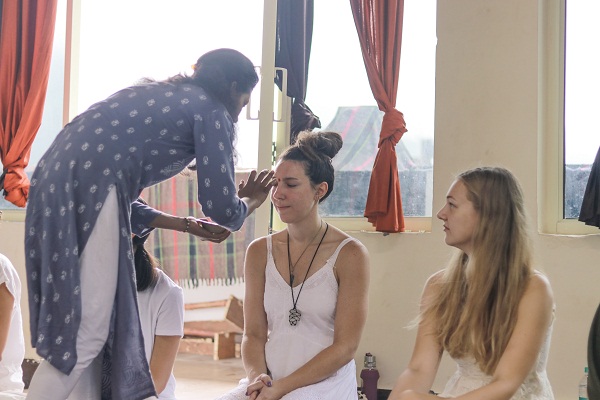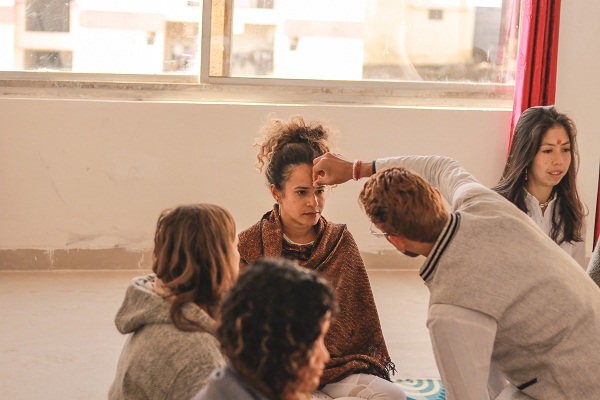After practicing yoga for its various curing abilities, you may be over a narrower track to its broad reach. Does yoga have more to it than what you practice on that mat?
Indeed, yes, yoga carries a different meaning for several people. For you, it may be purely surmounted with the essence of physical exercise. While many believe yoga as a science to stay healthier, more robust, and flexible, some feature it on a more influential screen. Yoga and meditation track down the intellectual serenity for many to experience an escape to the divine world. Ever thought why do you worship a deity or chant mantras?

Although there are various prospects of yogic powers, one thing that convoys all into the same grounds is “unity.” While yogic science has out branched several pillars, some moot its existence still now with the same fundamental traditionality.
Does an enigma reside beyond asanas?
While you delve in for various stretching, twisting, balancing, and meditating, scroll down to know the traditional roots of all yoga forms. This may be a branch of a giant tree of yoga, but the twigs still point its existence to a typical “sutra.”

Ancient texts of Hatha Yoga pradipika and the great verses of the Yoga Sutras focus minimally on the physical aspects of yogic sciences. Do we have any evidence as to the lingering questions over where did the postures come from?
The Yoga Sutras
The Yamas and Niyamas can be witnessed to originate from the euphonious verses of “The Yoga Sutras of Patanjali.” They are often taken as moral codes for any yogi. It lays down the fundamental foundations of ethical living in a classical approach. You may be mistaken for taking the book as having profound philosophical texts. Instead, it is much like a guiding book with more instructions for moral living, emphasizing more over self-righteousness.

There are eight limbs to the yoga sutras. Interestingly, each sutra defines and reflects a particular aspect of yogic life. You can recall these eight limbs over the progressive ladder of yogic realizations.
- Yama- It implies moral discipline.
- Niyama- It emphasizes observances.
- Asana- It describes the physical postures.
- Pranayama- It exemplifies the various breathing techniques.
- Dharana- It lays the fundamental foundations for concentration.
- Dhyana- It reflects your meditation and absorption powers.
- Samadhi- It stands a pillar for enlightenment and blissful prospects of yoga.
Yamas: a classical approach for a yogi life

What guides you to deal with the world around you? Yamas guide us to share a broader outlook on the general perspective. Not only that, but Yamas also teaches us to act towards ourselves too.
- Ahimsa lets you follow a non-violence and a non-harming life. It gets reflected in your words, deeds, and thought towards a healthy life.
- Satya: It reflects your truthfulness towards various life events.
- Asteya: It describes your non-stealing nature.
- Brahmacharya: It is known as celibacy and focuses on the appropriate use of energy.
- Aparigraha: It emphasizes on non-hoarding and non-greedy aspects.
Can a yogi participate in sexual activities?
Some ancient verses insist that celibacy is a must for a “pure” yogic path. But, in the present context, few yogis opt-in for a contrasting ecstatic lifestyle. Apart from the other Yamas, as mentioned above, brahmacharya is considered as a significant step in a path to enlightenment. According to different yoga practitioners from around the globe, practicing celibacy is much more reforming than involving in sexual activities. They believe no sexual experience can bring them closer, as abstinence does to the spiritual and moral aspects of enlightenment. Interestingly, spiritual luminaries like Mother Teresa, Ramakrishna, and Gandhi have practiced celibacy at some point in their lives. It is believed to boost your most vibrant nerve cells that highlight vitality and power.

But on the other hand, the notion is challenging in the present world. When it is believed that yogis should not have sex or even involve in their sexual energy in any way has contradicting views now. Do the yogis share the same world as the ancient saints had?
Well, of course, NO! The ancient yogis shared a completely enunciated outlook over worldly matters. But now, if you get tossed in a weekend yoga class, what do you find?
Even though much of yoga practices are based on ecstatic perceptions, you can find its applicability to improve one’s sexual abilities.
Over the fine print
A lot of yoga practitioners would find a sex-free life hard to accept, but undoubtedly, few contemplate it. The idea of celibacy is taken at various levels for different practitioners. And no hard and fast rule describes its acceptance.
In conclusion

Over the years, Brahmacharya has been the most controversial Yamas. While most people do not accept celibacy for a classical approach, brahmacharya is introduced to connect to the traditional beliefs virtually. Indeed, celibacy can effectively delve into for more benefits on the spiritual and intellectual aspects of ancient yogic texts.
Amid global lockdown, you should not venture out for your yoga classes. Subscribe our YouTube channel to carry out your practice during the Coronavirus crisis.
For more details, call us at 955-867-2399 or please mail us at rishikeshvinyasayogaschool@gmail.com.
Visit our Facebook page for reviews and follow us on Pinterest.